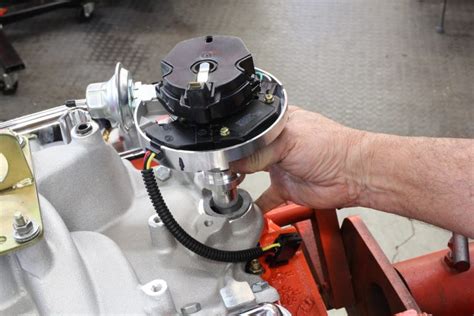The Secrets to Perfect Distributor Point Timing
Precise distributor point timing is crucial for optimal engine performance, fuel efficiency, and longevity. Getting it wrong can lead to poor combustion, reduced power, increased emissions, and even engine damage. This article dives deep into the secrets to achieving perfect distributor point timing, covering everything from understanding the basics to advanced troubleshooting techniques.
What is Distributor Point Timing?
Before we delve into the secrets, let's establish a clear understanding of what distributor point timing actually is. In vehicles equipped with distributor-based ignition systems (older vehicles primarily), the distributor's role is to distribute high-voltage electricity to the spark plugs in the correct firing order. The points, or breaker points, are mechanical contacts within the distributor that open and close to trigger the ignition coil. The timing of this opening and closing is critical. Accurate distributor point timing ensures that the spark plug fires at precisely the right moment in the engine's combustion cycle, maximizing efficiency and power. This timing is typically measured in degrees before top dead center (BTDC) of the piston's stroke.
Why is Accurate Distributor Point Timing Important?
Inaccurate distributor point timing directly impacts several key aspects of engine performance:
-
Engine Power: Incorrect timing leads to inefficient combustion, reducing the power output of the engine. Too early (advanced timing) can cause knocking (detonation), while too late (retarded timing) results in incomplete combustion.
-
Fuel Efficiency: Precise timing optimizes the combustion process, resulting in better fuel economy. Mistimed ignition wastes fuel and reduces mileage.
-
Emissions: Poor combustion due to inaccurate timing produces increased emissions of harmful pollutants.
-
Engine Wear: Consistent mistiming can cause excessive stress on engine components, leading to premature wear and tear.
How to Check and Adjust Distributor Point Timing
Checking and adjusting distributor point timing requires some mechanical aptitude and the right tools. The specific procedure varies slightly depending on the vehicle's make and model, but the general steps remain consistent:
-
Consult your vehicle's repair manual: This is crucial for precise instructions and specifications for your specific engine.
-
Gather necessary tools: You'll need a timing light, a dwell meter (optional, but highly recommended), and potentially a feeler gauge.
-
Access the distributor: Locate the distributor and gain access to its adjusting mechanism.
-
Set the engine to top dead center (TDC): Use the timing marks on the crankshaft pulley or harmonic balancer to accurately position the piston at TDC of the number one cylinder. Your repair manual will guide you through this process.
-
Connect the timing light: Properly connect the timing light to the number one spark plug wire and the battery.
-
Adjust the distributor: While cranking the engine (or with the engine running), use the timing light to observe the timing marks. Adjust the distributor until the marks align with the specified degrees BTDC as per your vehicle's manual. The dwell meter helps ensure the points are opening and closing for the correct duration.
-
Verify the adjustment: Re-check the timing after making adjustments to ensure accuracy.
Troubleshooting Common Distributor Point Timing Issues
Several issues can lead to inaccurate distributor point timing:
1. Worn Distributor Points:
- Problem: Worn points lead to poor electrical contact, resulting in weak or inconsistent sparks.
- Solution: Replace worn points with new ones.
2. Incorrect Point Gap:
- Problem: A point gap that's too wide or too narrow affects the timing and spark strength.
- Solution: Adjust the point gap using a feeler gauge according to the manufacturer's specifications.
3. Damaged Distributor Cap or Rotor:
- Problem: Cracks or carbon buildup on the cap or rotor can cause misfires and inaccurate timing.
- Solution: Replace the distributor cap and rotor if necessary.
4. Vacuum Advance Problems:
- Problem: Malfunctioning vacuum advance mechanisms can lead to inconsistent timing.
- Solution: Inspect the vacuum advance mechanism and replace it if faulty.
What are the signs of bad distributor point timing?
- Rough idling: The engine runs unevenly at idle speed.
- Lack of power: The engine struggles to accelerate or maintain speed.
- Poor fuel economy: You notice a significant decrease in fuel efficiency.
- Backfiring: The engine backfires through the carburetor or exhaust.
- Hard starting: Difficulty starting the engine.
How often should I check my distributor point timing?
While there's no hard and fast rule, it's generally recommended to check and adjust your distributor point timing during routine tune-ups or if you notice any of the symptoms mentioned above. This is especially important if you've recently performed other engine maintenance.
Mastering distributor point timing requires patience and attention to detail. By following these guidelines and understanding the potential issues, you can ensure your engine runs at its peak performance, saving fuel and extending its life. Remember to always consult your vehicle's repair manual for specific instructions and specifications.

